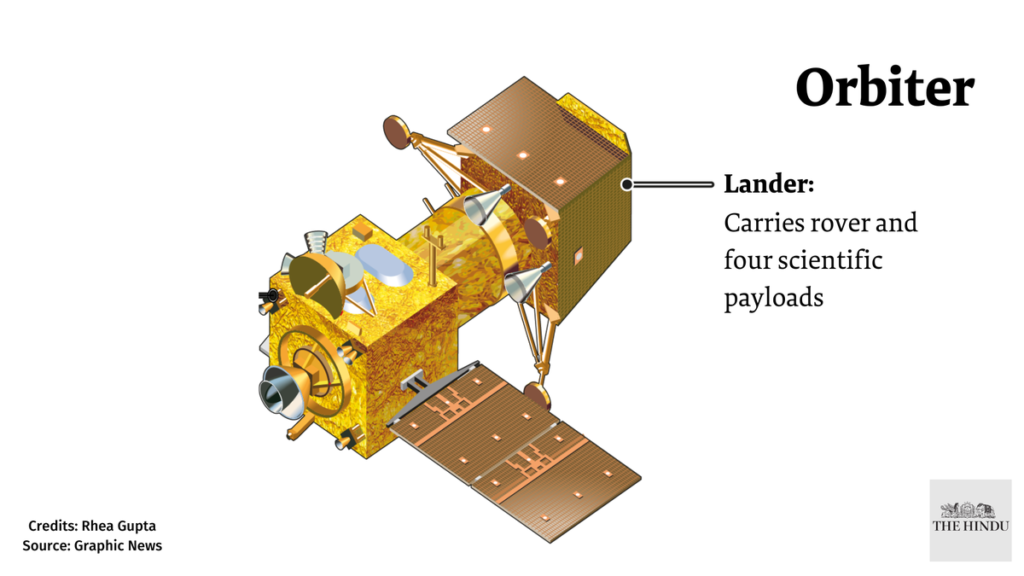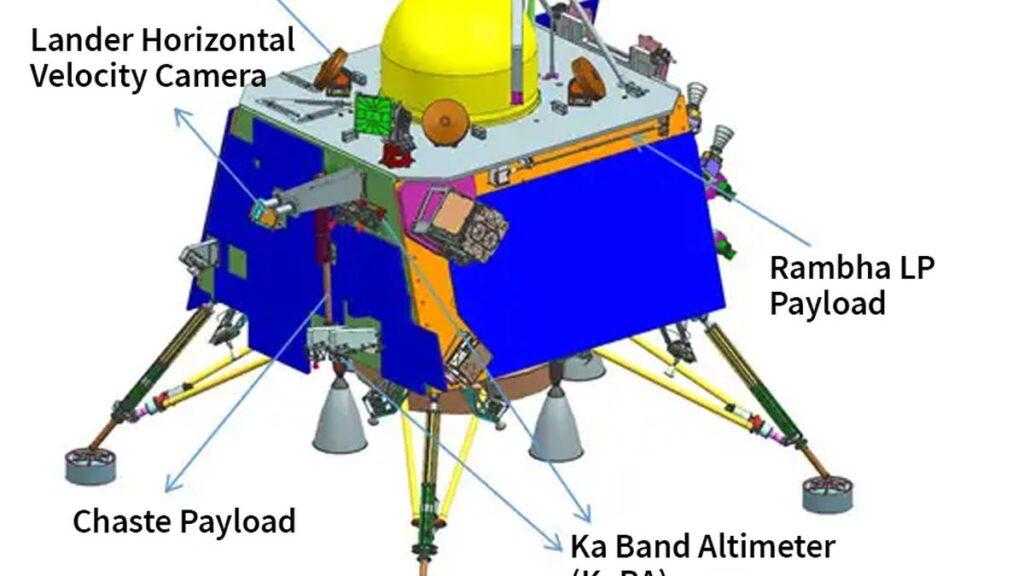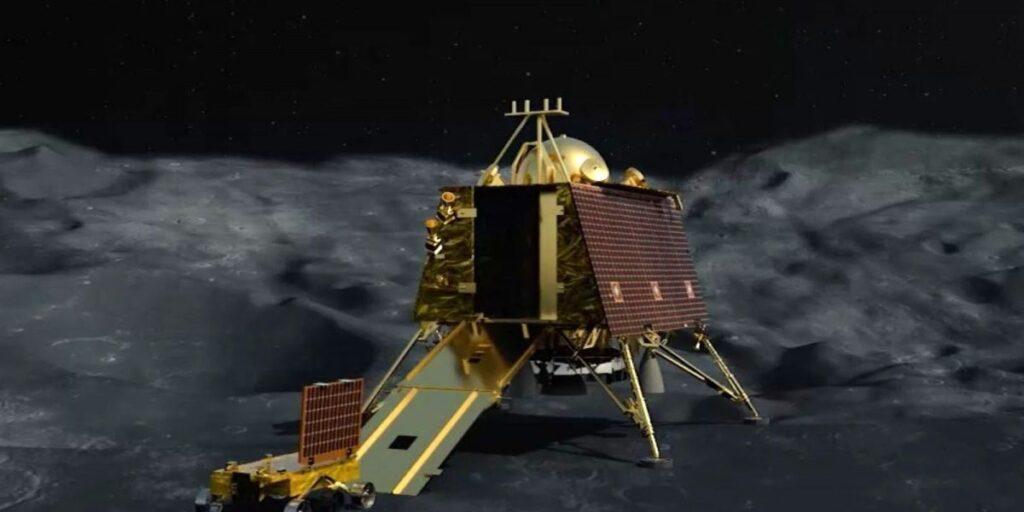Table of Contents
Water on the Moon
In a remarkable feat that has garnered global attention, India achieved a significant milestone by successfully landing its Chandrayaan-3 spacecraft on the moon’s south pole on August 23, 2023. The achievement was confirmed by the Indian Space Research Organisation (ISRO), which announced that the lander named Vikram touched down at 6:04 pm IST (11:34 GMT).
The landing itself was a nerve-wracking endeavor, given the challenging topography and the shadows cast by craters in the moon’s south pole region. Overcoming these obstacles, the ISRO team achieved the historic landing, securing India’s position as the first nation to successfully land a spacecraft on the moon’s south pole.
Here are some of the things that India has found on the moon:
- Water ice: The Chandrayaan-1 mission found evidence of water ice in the moon’s polar regions. This is a valuable resource for future human exploration, as water can be used for drinking, fuel, and other purposes.
- Minerals: The Chandrayaan-2 mission found evidence of a variety of minerals on the moon, including silicon dioxide, aluminum oxide, and iron oxide. These minerals could be used to extract resources for future human exploration.
- Volcanic activity: The Chandrayaan-2 mission also found evidence of volcanic activity on the moon. This suggests that the moon may have been more geologically active in the past.
- Impact craters: The moon is covered in impact craters, which provide clues about its history. The Chandrayaan-2 mission has helped to map these craters in greater detail.
- Lunar magnetic field: The Chandrayaan-2 mission has also helped to map the moon’s magnetic field. This field is thought to be generated by the moon’s core.
These are just a few of the things that India has found on the moon. The Chandrayaan-3 mission is expected to make further discoveries, and it will be exciting to see what we learn about the moon in the years to come.
A Test of Expertise and Determination

The successful landing of Chandrayaan-3 stands as a testament to India’s prowess in space exploration and underscores its ambitions to establish itself as a prominent player in the global space race. The accomplishment comes hot on the heels of a recent Russian spacecraft crash on the moon, which highlighted the complexities and difficulties of lunar landings.

The significance of Chandrayaan-3’s achievement resonates far beyond its immediate success. With its state-of-the-art technologies and meticulous planning, the mission showcases India’s capabilities and its dedication to pushing the boundaries of space exploration.
The Journey Ahead
With the successful landing phase completed, Chandrayaan-3 is now poised to embark on its scientific mission. The mission encompasses a thorough study of the moon’s surface and subsurface to detect signs of water ice, a critical resource for future space endeavors. The spacecraft also carries Pragyan, a rover designed to traverse the lunar surface and conduct detailed exploration.
The triumphant arrival of Chandrayaan-3 not only elicits pride in India’s scientific community but also instills a sense of inspiration in generations to come. The dedication and tireless efforts of the ISRO team have paved the way for aspiring scientists and engineers, illuminating the possibilities of what human ingenuity can achieve.
Navigating the Uncharted

Landing on the moon’s south pole is a feat laden with challenges, making India’s achievement all the more commendable. The rugged terrain and the enigmatic shadows cast by craters presented unique obstacles for a safe landing. This landmark event extends India’s space capabilities to new frontiers, signifying its ascent as a formidable contender in the global space domain.
The scientific rewards reaped from Chandrayaan-3’s mission are boundless. The unexplored terrain of the moon’s south pole promises new insights into its geology, climate, and history. Particularly, the presence of water ice is of immense interest, holding the potential to revolutionize future lunar exploration by serving as a vital resource for sustenance and propulsion.
Pioneering Discoveries Await
The impact of Chandrayaan-3’s successful landing on the moon’s south pole is profound. It unveils an array of exciting scientific discoveries and research prospects that could reshape our understanding of the moon and the universe. Here are a few focal areas of study:
1. The Presence of Water Ice
The moon’s south pole is believed to house significant deposits of water ice. Chandrayaan-3’s instruments will scrutinize the composition of lunar soil and rocks to ascertain the presence of water ice, shedding light on the moon’s resource potential.
2. Lunar Geology
Active volcanic features and the presence of lava tubes at the south pole intrigue scientists. Chandrayaan-3’s sensors and equipment will offer unparalleled insights into the moon’s geology and its intriguing history.
3. Lunar Climate Variations
The moon’s south pole presents climatic variations due to its extended shadows and reduced sunlight exposure. Chandrayaan-3’s mission will provide comprehensive data on the moon’s climate, enhancing our understanding of its dynamic environmental conditions.
4. Future Lunar Missions
Chandrayaan-3’s success sets a precedent for future lunar missions. The achievement reaffirms that landing on the moon’s south pole is indeed feasible, opening the door to a plethora of possibilities, including potential manned missions and enhanced exploration efforts.
A Promise for the Future
In sum, the successful landing of Chandrayaan-3 on the moon’s south pole is an unparalleled achievement that resonates with India’s unwavering commitment to scientific exploration and innovation. By overcoming challenges, pushing boundaries, and embracing international collaboration, India’s space program has not only marked its place in history but also paved the way for new horizons in space exploration.
Chandrayaan-3’s accomplishments are a reminder of humanity’s inherent curiosity and our collective ability to surmount seemingly insurmountable challenges. As we stand on the cusp of new discoveries and a brighter future in space exploration, the echoes of Chandrayaan-3’s success will continue to reverberate through the annals of scientific achievement.
FAQs
- Is Chandrayaan-3’s successful landing a significant achievement for India?Absolutely. Chandrayaan-3’s successful landing on the moon’s south pole is a monumental achievement for India’s space program. It showcases India’s advanced technological capabilities and determination to explore new frontiers in space.
- Why is landing on the moon’s south pole challenging?The moon’s south pole presents rugged terrain, long shadows, and potential obstacles due to craters. These factors make it a challenging area for spacecraft to land safely and operate effectively.
- What are the scientific goals of Chandrayaan-3’s mission?Chandrayaan-3 aims to study the moon’s surface and subsurface for signs of water ice, investigate its geology and climate, and gain insights into its impact history and magnetic field.
- How does Chandrayaan-3’s success impact future lunar exploration?Chandrayaan-3’s success paves the way for future missions, including the potential for manned missions and in-depth exploration of the moon’s south pole. It demonstrates the feasibility of landing in challenging lunar regions.
- What role does international collaboration play in Chandrayaan-3’s mission?Chandrayaan-3 benefits from international collaborations, such as contributions from ESA, DLR, and NASA. These collaborations enable the sharing of expertise, resources, and knowledge, advancing global space exploration efforts.
GE Washer Dryer Combo: Elevate Your Laundry Experience with Ultimate Efficiency

